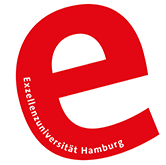125 years as an archaeological hot spotThe Excavations at Miletus: An International Research Campus
16 August 2024, by Newsroom editorial office

Photo: University of Hamburg / Berns
The ruins of the ancient city of Miletus have been the subject of systematic archaeological research since 1899. Since 2018, the excavations have been carried out as teaching excavations under the direction of the University of Hamburg. They offer students from both Hamburg and abroad research-based and practice-oriented teaching.
The excavations in the city 80 kilometers south of Izmir are of great significance for Turkey, as Miletus is an important historical site with a long history stretching from the end of the fourth century BCE to the fifteenth century CE. Finds include excellently preserved painted vessels and famous sculptures, such as the Miletus Torso. They are exhibited on site and in the museums of Izmir, Istanbul, Berlin, and Paris.
International and interdisciplinary cooperation
The archaeological studies are led by Prof. Dr. Christof Berns, professor of classical archaeology. Also involved from the University of Hamburg are Prof. Dr. Kaja Harter-Uibopuu (ancient history), Prof. Dr. Frank Steinicke (human-computer interaction), and researchers from the Cluster of Excellence Understanding Written Artefacts. The excavations take place with the permission of the Turkey’s Directorate-General of Cultural Heritage and Museums and are carried out in collaboration with the Mimar Sinan Fine Arts University (Istanbul), the École normale supérieure (Paris), the Berliner Hochschule für Technik, and Kiel University.
Research and teaching equally promoted
The local projects are supported by various parties. In addition to the University, which has just approved interim funding, there is support from the German Research Foundation (DFG) and the Agence Nationale de la Recherche, among others. Via the Cluster of Excellence Understanding Written Artefacts, the DFG provides funding, for example, to the project Immersive City Scripts: Inscriptions and the Construction of Social Spaces in Miletus (Asia Minor), in which University of Hamburg researchers analyze inscriptions dating back to the Roman Empire in Miletus’s public spaces and bring them to life using virtual reality.
However, education also plays an important role on the international campus at the excavation site. The teaching of the Bachelor of Arts in Classical Archaeology at the University is closely linked to practice in Miletus, and numerous bachelor’s and master’s theses and doctoral dissertations have been written in recent years. The international summer school Practice of Archaeological Building Recording also teaches participants application-oriented skills by integrating them into current research.
Around 50 experts from various fields and 65 students from Germany, France, Turkey, and other countries work in the team. As part of the Bachelor of Arts in Liberal Arts and Sciences, there will also be a Miletus seminar in the future under the direction of Prof. Dr. Matthias Schemmel (Department of Philosophy) and Prof. Dr. Christof Berns (Department of Studies in Culture and Arts).



